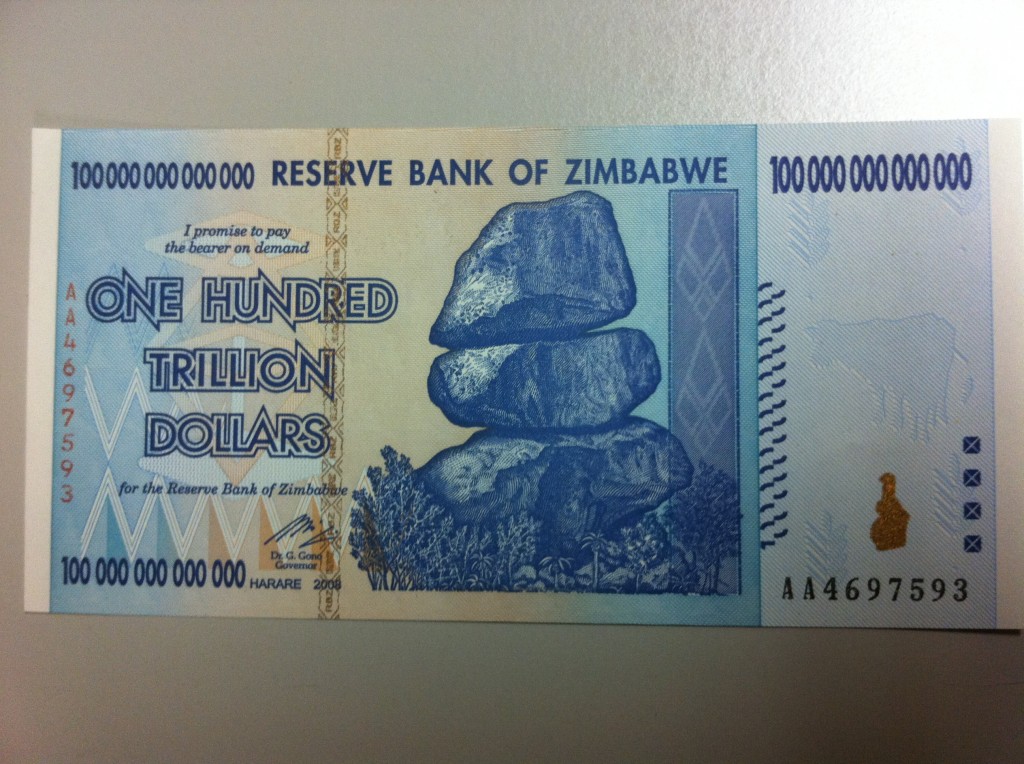First, read this. Can’t be bothered? To summarize, a year ago we questioned the convention of quoting the price of gold in terms of dollars, instead of the other way around. After all, gold is more stable and less subject to manipulation than money that the Federal Reserve creates out of ether.
Back then, the U.S. dollar traded at 29.65 milligrams of gold (Aumg.)
Federal Reserve chairman Ben Bernanke, the closest thing we have to a pure autocrat in the modern world, assures us that the dollar’s value is strong and its purchasing power uncompromised. After all, inflation has been negligible over the past year, right?
Measuring yesterday’s devalued dollar against today’s is one thing. Measuring it against gold is something different. Today, the dollar’s trading at 21.77 Aumg. At the rate we’re going, another 3 years and the value of the dollar will be eradicated.
Here’s some more currency value fun. It’s an updated chart from that 2009 post, with a bonus row for our longtime readers:
| October 2009 value | Value today | |
| € | 44.18 | 30.19 |
| £ | 48.15 | 35.08 |
| yen | .33 | .27 |
| Swiss franc | 29.14 | 22.52 |
| Mexican peso | 2.26 | 1.78 |
| renminbi | 4.34 | 3.27 |
| Russian ruble | 1.01 | .71 |
Yeah, inflation’s nothing to worry about. Neither in the United States nor around the world.
Go out today and buy a hard asset. Or two.




